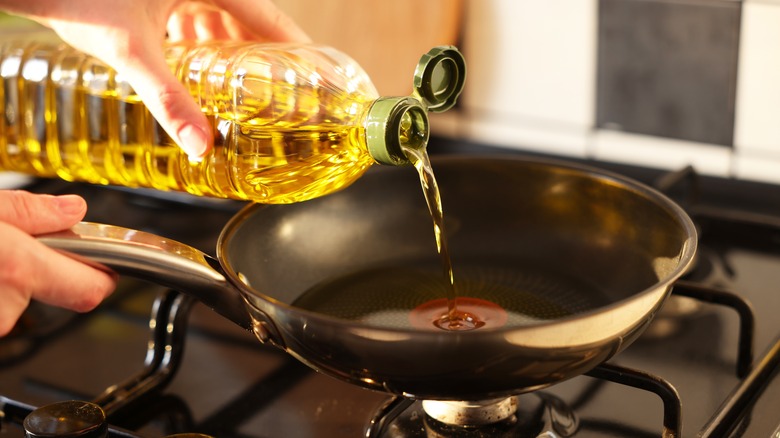What Does It Mean When A Recipe Calls For A Neutral Oil?
If you've cooked or baked before, you've almost certainly come across the term "neutral oil." Neutral oils are often called for in many settings — sautéing, baking, grilling and frying, to name a few — but what exactly is a neutral oil? In short, neutral oils are oils that have little or no taste, meaning they won't change the flavor of your food. Compare them to oils like walnut or olive, which have extremely distinct flavors, and you'll see right away why neutral oils are so important in the kitchen.
So, when should you be using neutral oil? Recipes typically call for this when the recipe maker doesn't want anything interfering with the taste of the final dish. Neutral oils are used in many styles of cooking and baking, and each of these tasks have neutral oils that are best suited to their specifics. For example, the best oil for sautéing varies depending on the heat of the pan.
Some popular neutral oils
First, let's take a look at some of the most common neutral oils you're likely to find in any pantry. Avocado oil has the highest smoke point among plant-based cooking oils at a whopping 520 degrees Fahrenheit, and it's full of vitamins and nutrients. (This combination of high smoke point and neutral flavor is what makes avocado oil Bobby Flay's go-to cooking oil.)
Vegetable oil is an all-purpose cooking oil made from one or more plants (like soybeans, corn, sunflower, rapeseed, and safflower). It has a very neutral taste as well as a high smoke point, making it perfect to use whenever neutral oil is called for.
Canola oil is a sub-type of vegetable oil, made from the rapeseed plant, with a comparable smoke point and mild flavor, so it can generally be used whenever vegetable oil is called for — but canola oil also boasts lower levels of saturated fat.
Peanut oil is great for high-heat cooking and contains vitamin E, but can't be used when cooking for people with peanut allergies. So, you may want to avoid using it unless you're just cooking for yourself.
From here, it's all about experimenting! Find what oils you like best and stick to them — it's the easiest way to make cooking with neutral oil a simple task.

